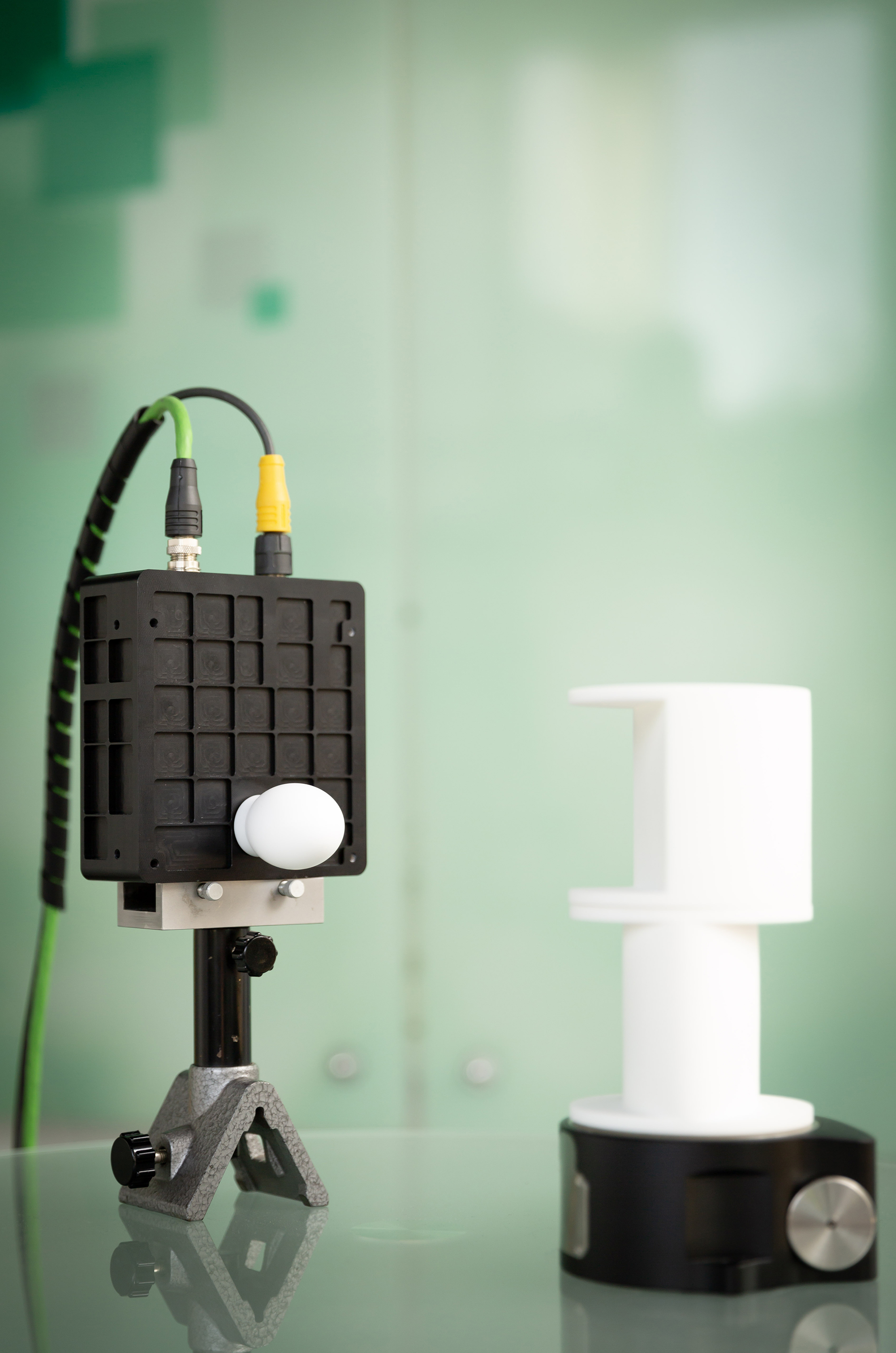Increased Efficiency through Precise Inline Measurement: Radar Technologies for the Steel Industry


Steam, scale, and splashing water: Harsh environmental conditions prevail in the hot rolling mills of steel production. Conventional measurement systems, such as optical or X-ray systems, are often impractical in these settings. Radar, on the other hand, faces no issues with these adversities and helps bridge monitoring gaps in the production process. For over a decade, Fraunhofer FHR has been working on the development of high-frequency sensor technology for measuring process-relevant parameters under challenging environmental conditions, continuously advancing these technologies. The starting point was a project with the cooperation partner IMS Messsysteme GmbH about 10 years ago, in which a demonstrator for precise width measurement of steel slabs based on radar technology was developed, completed, and put into operation. Since then, intensive research has been ongoing.
In the hot strip mill of steel production, the pre-strips, heated to 1000 degrees, come directly from the furnace and must be rolled from a thickness of 300 mm to 10 mm – and that with utmost precision in the required width to avoid waste. In 2014, Fraunhofer FHR installed the first prototype for radar-based width measurement at Salzgitter Flachstahl GmbH, which accurately measures the width and reports it to the control system. This prototype features a bistatic arrangement with one transmitter and two receivers at 60 GHz with a 7 GHz bandwidth, achieving an accuracy of +- 250 µm at a 4 kHz measurement rate.
Building on this, Fraunhofer FHR has developed additional inline systems that are already in use. In 2021, the thickness gauge with four monostatic synchronized sensors at 78 GHz and a 20 GHz bandwidth was introduced, achieving an accuracy of +- 3 degrees and +- 150 µm with angle compensation at a 1 kHz measurement rate. The so-called furnace radar enabled band center control at high-temperature furnaces in 2023. The special feature here is the measurement inside the furnace through insulating materials that are permeable to electromagnetic waves. The furnace radar is a bistatic arrangement with one transmitter and two receivers at 60 GHz and a 7 GHz bandwidth. The accuracy is up to +- 1 mm (this is application-dependent due to transmission through the furnace window) at a 1 kHz measurement rate. Also new in 2023 is the µRad: a microcontroller-based counterpart to the thickness gauge. In addition to optimizing resource utilization, energy efficiency, and costs, the focus here is on coherent connectivity. The demonstrator of this system is set up at Fraunhofer FHR and can be used for testing purposes.
MIMO Radar: Optimization of the Sensor Development Started in the ASRA Project
Currently, researchers in Wachtberg are also working on finalizing the sensor development initiated in the ASRA project. In the ASRA project, IMS Messsysteme GmbH, SMS Group GmbH, IMST GmbH, Ruhr-Universität Bochum, and Fraunhofer FHR collaborated to realize contour measurement of the rolled edge within a hot rolling mill using radar technology for the first time, aiming to save energy and reduce costly waste. Based on the success of width measurement, other deformations that occur during the rolling of steel and cause damage to the roller table and rolling stand, as well as expensive waste, are now being measured. MIMO Radar with two sets of 16 channels is being employed, with six stacked and synchronized. One channel always transmits, and the remaining 31 (plus possibly an adjacent module) receive. Through the different perspective angles of the receiving channels, the surface of the slab edge can be reconstructed with appropriate signal processing.
In addition to imaging contour measurement in the steel mill, there are other exciting applications for MIMO Radar: promising initial tests have already been conducted in the challenging sorting of black plastics. But the new system could also be helpful in detecting foreign objects in food or other products and substances.